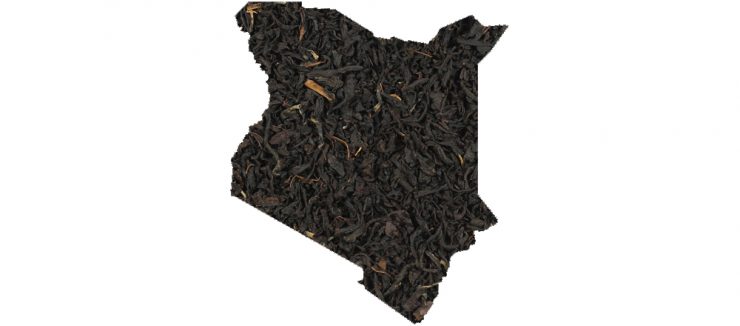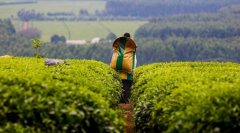What kind of black tea does black tea include? the efficacy and function of the five common black tea brands in Kenya
Did you know that about 50% of the tea in Britain comes from Kenya? This extraordinary country of East Africa has a lot of things for leisure drinkers and connoisseurs to enjoy, which is what we are exploring here.
Next, you will learn about the facts, data, history and health benefits of Kenyan tea. Once you have this useful information, you can browse through a large number of our choices!
Kent and Sussex Tea and Coffee companies proudly pack every fresh order of loose tea, Tisane and coffee. This is our way to ensure the quality and consistency of each cup of tea.
Of course, our Kenyan tea is no exception. Please read on to learn more about this extraordinary world and why it is still so popular.
What is Kenyan tea?
Kenya is just one of many countries that produce tea in Africa. Other countries include Tanzania, South Africa (best known as Louis Persian tea rather than so-called "real" tea), Malawi and Zimbabwe (see Portsmouth Tea).
However, Kenyan tea is undoubtedly the most famous. The country is also the largest producer in Africa and ranks fourth in the world according to some statistics.
There are two obvious sectors of the local tea industry: large-scale tea gardens and small-scale tea gardens, that is, small farmers. Overall, there are about 550000 tea farmers, many of whom harvest their crops on the highlands of the western Rift Valley.

The country's equatorial location makes year-round production possible, almost ensuring that the product is always fresh. Shrubs grow luxuriantly and slowly at high elevations, which makes the leaves better.
There are also few bugs, so there is no need for pesticides. However, a persistent problem is insufficient rainfall, which often causes a lot of anxiety to many farmers.
After a successful season, harvesting takes place from January to March, and then again in June and July. Most of them have become Kenyan black tea, although there are also some Kenyan white and green tea varieties.
Selection itself seems to be an art form, most of which are done by hand. However, when it arrives at the factory, about 90% of the products are mechanized by CTC (cutting, tearing, crimping).
When brewed, Kenyan tea produces a bright copper wine with a distinct light flavor. It has a distinctive vitality with an easily recognizable balance of astringency and tannins. Some people even noticed that it bears a subtle resemblance to Assam tea in India. This is partly due to the history of Kenyan tea.
The History of Kenyan Tea
Scientists believe that humans originated in part from Kenya's iconic East African Rift Valley millions of years ago. However, the tea that these humans finally produced is only recently.
In fact, green tea in China can be traced back to about 5000 years ago, probably in 2737 BC, while Kenyan tea only began in the early 20th century-1903 to be exact!
At that time, a man named G.W.L. The British in Kane planted the first batch of tea in Kenya. It happened in Limuru in the Kiambu district, even though it was just for decoration. In fact, it was not until 1918 that the Scotsman Arnold Butler realized its true potential.

A few years ago, Butler bought a farm called Kiambethu from the British government. 20 miles from Nairobi, 7200 feet above sea level, there are several challenges ahead. At first, Butler planned to grow coffee. However, his crop soon failed-just like all other plants.
But over time, tea proved to be a great success, and Arnold eventually planted 20 acres of Indian camellia. To this day, Kiambethu Farm is still in the hands of the McDonnell family. At the same time, India has tea trees all over the country.
Most of the country's industries are supported by the Kenya Tea Development Authority (KTDA), which was established in 1965. The role of the Institute and the Kenya Tea Commission is to promote and support smallholder farmers. But is there any special Kenyan tea?
Important Notice :
前街咖啡 FrontStreet Coffee has moved to new addredd:
FrontStreet Coffee Address: 315,Donghua East Road,GuangZhou
Tel:020 38364473
- Prev

Latte milk foam teaching skills of latte coffee milk foam smooth and long-lasting
(os: the flower pulling is very good today! (the foam burst after a minute or two! There are craters one after another, and the flowers don't look good. Why?! (the mental journey of my buddies) looking at the milk foam on the surface of the moon is really uncomfortable, it's all right! This article will analyze the origin of the disintegration phenomenon in Qianjie.
- Next

What are the effects and functions of long-term drinking African black tea? taboo characteristics of African black tea brands
Kenya's tea garden tea is grown in many regions and regions of the country. This includes Kericho, Bomet, Nandi, Kiambu, Thika, Maragua, Muranga, Sotik, Kisii, Nyamira, Nyambene, Meru, Nyeri, Kerinyaga, Embu, Kakamega, Nakuru and trannzoia. Most of these places have 80% of the right weather, which makes
Related
- Beginners will see the "Coffee pull flower" guide!
- What is the difference between ice blog purified milk and ordinary milk coffee?
- Why is the Philippines the largest producer of crops in Liberia?
- For coffee extraction, should the fine powder be retained?
- How does extracted espresso fill pressed powder? How much strength does it take to press the powder?
- How to make jasmine cold extract coffee? Is the jasmine + latte good?
- Will this little toy really make the coffee taste better? How does Lily Drip affect coffee extraction?
- Will the action of slapping the filter cup also affect coffee extraction?
- What's the difference between powder-to-water ratio and powder-to-liquid ratio?
- What is the Ethiopian local species? What does it have to do with Heirloom native species?

